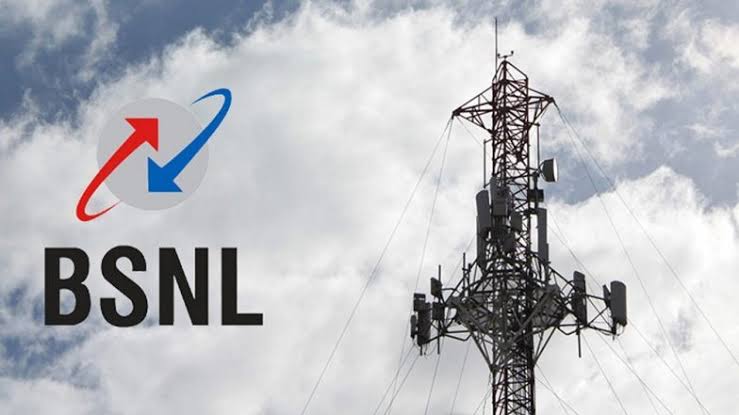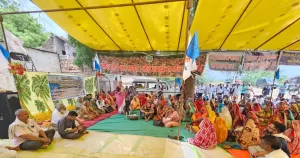Prabir Purkayastha
The major private operators in the telecom sector, along with the state-run ones, are currently reeling under a three-year price war with Reliance Jio. This has hit their profitability hard, with Jio buying its entry into the market with very low call and data charges, what others have termed as predatory pricing. This has been compounded—in the case of the private operators—by their not honouring the obligations of paying their license fees as a percentage of their revenue and the recent Supreme Court order.
The Supreme Court has ordered private operators to pay Rs 92,000 crore as license fees, creating a crisis for these companies. This is apart from spectrum usage charges, another Rs 41,000 crore, compounding their crisis.
The business papers are awash with tears for the plight of the poor telecom private players, who are now being forced to shell out these huge amounts when they are already in deep financial trouble. What they forget to mention is that the amounts over which these disputes arose were initially much smaller. The original amount was only Rs 23,000 crore, the rest of the Rs 92,000 crore being penalties and interest charges on the unpaid amount.
Even this Rs 23,000 crore accumulated over decades by not paying a small fraction of their revenue as license fees every year. This was trying to use clever—now shown to be too clever by half—accounting tricks with which the Department of Telecom (DoT) did not agree, leading to the dispute.
Instead of resolving this issue quickly, the private players first went to the Telecom Dispute Settlement Tribunal, then to high courts, and finally to the Supreme Court. All of this over what constitutes the Adjusted Gross Revenue or AGR, of which they had to shell out a small percentage.
From an accounting standpoint, the telecom players did something worse. They made no provisions in their balance sheets for these disputed amounts, meaning that they deliberately included the unpaid (or disputed amounts) in their profits, so that when they float shares in the stock market, they would look much more attractive. So a big part of their dazzling success story was built on deliberately withholding legitimate dues on account of license fees, and hiding these obligations from their shareholders.
Of course, as it always happens, if private players get in trouble, it is always the people who have to bail them out. The money is often siphoned off by private players through over-invoicing for capital goods, and the difference is transferred abroad into tax havens; services taken from the “founders” of other companies; and a variety of “smart” accounting practices. If the proverbial shit then hits the fan, the only losers are the banks and the general shareholders. And of course the subscribers of Airtel and Idea-Vodafone, the two major private players whose services are all but collapsing now.
Just to put these figures in perspective, it is widely being discussed that the telecom sector loans from the banks are of the order of Rs 7 lakh crore, a significant part of which will turn into non-performing assets or NPAs if the government does not bail out the telecom companies. Therefore, a high-powered committee has been set up by the government to bail out these companies.
Not that there are no winners from this telecom crisis, even if it is largely self-inflicted. Reliance Jio entered the telecom business late, and had the advantage of leap-frogging technology. It went straight to data as the primary telecom business of the future, which would subsume voice as well as messaging, which are clearly legacy businesses. Today we can carry voice and messages as mobile data, while the reverse—using voice services for mobile data—is much less efficient.
Second, Jio has huge profits and accumulated capital from its petroleum and gas business. It is this capital it has used to fund its initial foray into telecommunications. As a consequence, the share of accumulated dues that Jio has to pay due to the Supreme Court verdict is a measly Rs 13 crore, as against Airtel’s and Vodafone’s about Rs 22,000 crore and Rs 20,000 crore respectively. And it has very little loans, as the infrastructure has been largely created by or transferred to other Reliance companies.
The telecom mess has been a long time in the making. The revenue-sharing scheme, the cause of the current mess, started during former prime minister Atal Bihari Vajpayee’s tenure. In 1998, after losing its majority, his caretaker government introduced this revenue share scheme. This allowed private players to pay a share of their revenue as license fee, instead of the lump-sum license fees that they had agreed to pay during the auction of licenses in 1994.
The Delhi Science Forum—through this author—had challenged this decision of the government in the Delhi High Court. We had argued that the private players had secured their licenses with the full intention of not paying the license fees, and then holding the government to ransom, thereby diluting the license terms. The court gave only an interim order, and never a final verdict on this case, and it must be languishing still, in some judicial vault for such near-dead cases.
The issue of high initial license fees was “resolved” by the government by first fixing the license fee as 15% of AGR, then bringing it down to 12%, 10% and 8% for A, B and C-type circles respectively. It was later reduced to 8% for all circles. Having tasted blood—that the license-permit Raj had now become license-to-loot Raj—the telecom companies started a dispute over what should be included in the ‘adjusted’ part of their gross revenues, when they compute their AGR. They started this dispute even though the licenses issued by DoT had clearly stated what would, and would not, be included in AGR.
The Supreme Court’s verdict simply points out that a license issued and accepted by the company is a contract, and one party cannot ex post facto—after the fact—reinterpret the terms of the contract. The verdict reiterates that the adjustments as defined in the license have to be fulfilled and anything explicitly included as part of the AGR in the license has to be paid as license fee.
What now for the telecom sector? It is clear that the price war in the sector is over and we now have a clear cartel of three major private players operating together to jack up prices. They have raised the price of calls in tandem for both voice and data after this judgement, while the government ponders over what further relaxations they will require to survive their self-imposed wound of non-payment of full license fees.
The announcements by all the private players have come on the same day; and though there are some differences in tariffs, they are all of the same order. This is clearly collusive behaviour. Jio has now emerged as the market leader with its share of subscribers overtaking Airtel and Idea-Vodafone With its financial clout, it will now set the terms for the other two private players.
BSNL and MTNL, the state-run companies are in deep financial trouble with this government—after successive governments—running them to the ground and forcing them to offer benefits to private players. But if they also fold up, or follow the path of Air India, the people will have no protection from the new telecom cartel that has emerged after the price wars.
Jio’s telecom business model has been to use its huge cash reserves from other activities to create a new monopoly. It is banking not just on telecom subscribers but on other businesses that it wants to build on this infrastructure. It is planning to leverage its telecom infrastructure to create a new data and entertainment monopoly—think Netflix meets Amazon and Google. This will be a new data monopoly, built on its underlying telecom monopoly. This is the threat it poses to our future; that all our interactions with the outside world will pass through Jio. We will increasingly live through Jio. But that is a story for another day.
(Prabir Purkayastha is an activist for science and the Free Software movement.)




